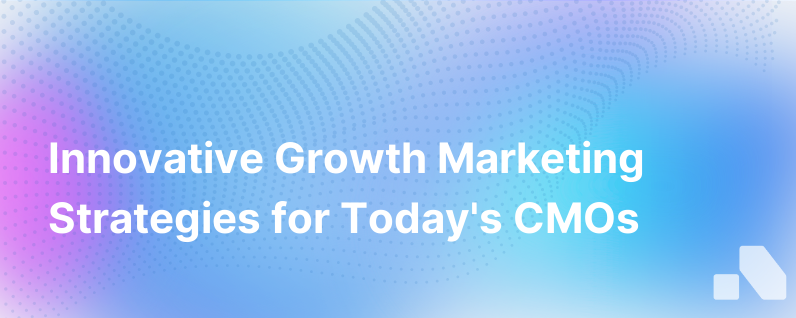
In the ever-evolving landscape of digital marketing, Chief Marketing Officers (CMOs) are constantly challenged to innovate, adapt, and grow their brands amidst formidable competition and changing consumer behaviors. Modern CMOs are more than just marketers; they are growth catalysts, leveraging a mix of strategic, analytical, and creative skills to drive their companies forward. The power of growth marketing, with its data-driven approach and focus on scalable strategies, has seen remarkable success across various industries.
In this article, we'll explore four compelling growth marketing examples that modern CMOs can draw inspiration from to turbocharge their strategies and propel their organizations to new heights.
1. Leveraging User-Generated Content and Community Engagement
Airbnb’s growth is a testament to the value of building a strong community. When the company was in its formative years, it didn't just rely on traditional marketing tactics. Instead, it capitalized on user-generated content to foster trust and authenticity. Airbnb encouraged its users to share personal stories and photos of their unique accommodation experiences. This content was then showcased across their website and social channels, creating a domino effect of engagement and brand loyalty.
Moreover, they engaged with their thriving online community by responding to tweets, re-sharing Instagram posts, and initiating hashtag campaigns, amplifying their reach and driving more people to their platform. By doing so, they didn't just market; they built a sense of belonging that resonated with their audience.
Key Takeaway for Modern CMOs: Incorporate user-generated content into your marketing strategy. Encourage and empower users to share their experiences with your brand, and actively engage with your community. This fosters a sense of ownership and word-of-mouth marketing that can lead to organic growth.
2. Implementing AI-Driven Personalization at Scale
Netflix is a prime example of AI-driven personalization done right. The streaming service harnesses the power of machine learning to personalize content recommendations for its millions of users. By analyzing vast amounts of data on viewing patterns, search histories, and ratings, Netflix offers tailor-made recommendations that keep users engaged and significantly reduce churn rates.
What sets Netflix apart is its ability to consistently fine-tune its algorithms to improve user experience. Whether it's changing the artwork of titles based on user preference or suggesting what to watch next, the company goes above and beyond to personalize at every touchpoint.
Key Takeaway for Modern CMOs: Invest in AI and machine learning technologies that can provide advanced analytics and personalization at scale. Understanding customer behavior and preferences allows you to create a more targeted and captivating user experience.
3. Referral Programs and Network Effects
Dropbox’s exponential growth can largely be attributed to its clever use of referral programs. Recognizing the power of word-of-mouth, Dropbox offered additional storage space for both the referrer and the referred, encouraging users to spread the word about their service.
This simple yet powerful technique capitalized on the network effect – as more people used the service, more data was shared, and more users were inclined to talk about Dropbox, propelling its growth even further.
Key Takeaway for Modern CMOs: Consider creating referral programs that reward existing users for bringing in new customers. Make sure that your incentives align with your user's needs and enhance their experience with your product.
4. Agile Marketing Mixed with Growth Hacking
Slack, the workplace communication platform, took the business world by storm with its remarkable growth trajectory. One key factor behind Slack’s success was its agile approach to marketing combined with growth hacking techniques. Instead of heavy upfront marketing investments, Slack used beta testing as a growth tactic, inviting users to test out their product and give feedback.
Through continuous iteration and responding to user input, Slack was able to refine its product and messaging. The company also integrated with other tools and services, making it almost indispensable in the workplace tech ecosystem. By the time Slack officially launched, it already had a dedicated user base ready to evangelize the product.
Key Takeaway for Modern CMOs: Adopt an agile marketing strategy that allows for testing and iteration. Pay close attention to user feedback and use it to inform your product development and marketing tactics. Moreover, consider how your product or service can integrate into wider ecosystems to become more invaluable to users.
Conclusion
These growth marketing examples showcase how a creative, analytics-driven approach can lead to significant business outcomes. For modern CMOs, the lessons are clear: foster community through user-generated content, personalize experiences through AI, create incentivized referral programs, and maintain agility in your marketing efforts. By taking inspiration from these successful tactics, you can steer your brand towards innovative growth strategies that capture the essence of what it means to market in today's digital world.
Incorporating these growth strategies isn't without its challenges, and this is where solutions like Aomni can bridge the gap. Aomni’s AI-platform for B2B sales delivers real-time account research, competitive insights, and personalized sales content, empowering modern CMOs and their teams with the data and tools they need to execute highly effective growth marketing strategies.